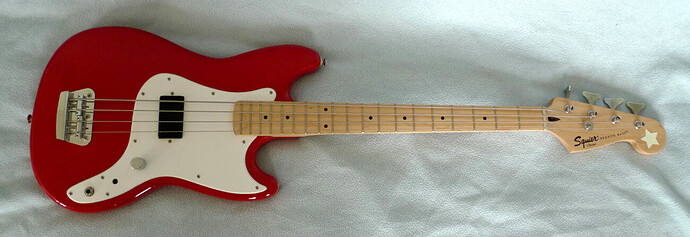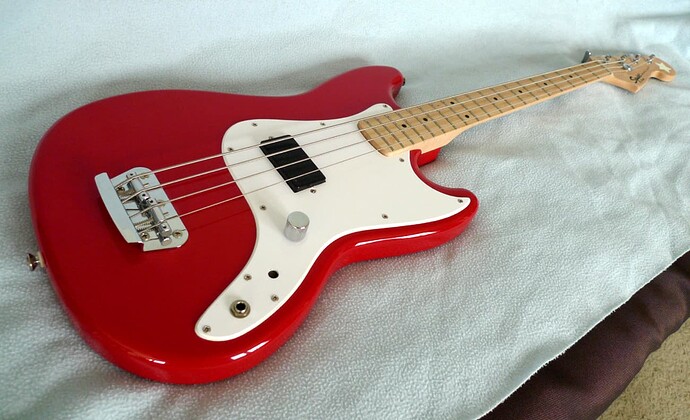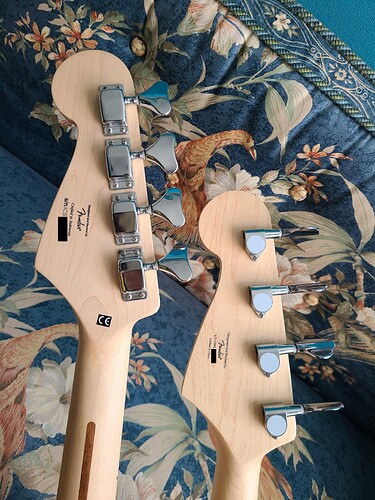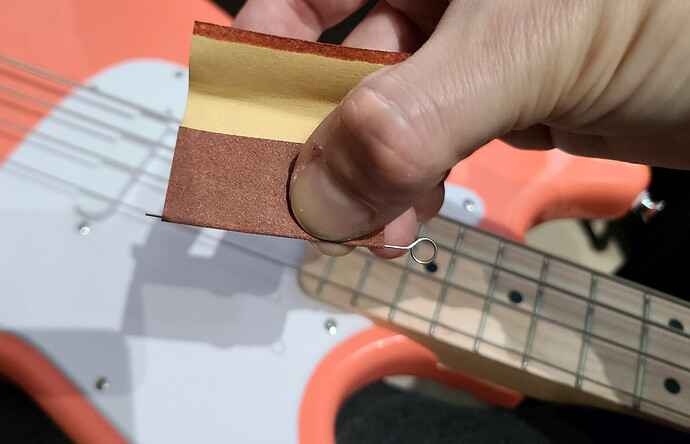Hi all ! As some of you know, I bought recently a new Squier Bronco Bass for my GF for 170€, with a discount (the normal price being around 185€) :
I used to own another one earlier, but the model has a bit evolved and that’s what I want to discuss here.
My original Bronco has been bought new in 2011 for 169€ and I sold it in 2013. It was a Torino Red one and I changed the pickup for an EMG P (active PB pickup in a HB form factor) :
Also I still own a Bronco neck, similar to the one I had on my original red Bronco. It’s a “NOS” (never used, so new old stock) 2017 one that I bought in 2020 or 2021 for a project that I still have in mind.
So I’ll compare a few points.
Factory, country and range
The serial number on my red Bronco and on my neck both starts with ICS which indicates that they were built in the Cor-Tek factory (Cort) in Indonesia. The serial number on the Tahitian Coral Bronco starts with CRNL. C means that it’s made in China, and RN is most probably the factory code, but I was unable to find more information about the exact factory.
Also the older Bronco’s were part of the Affinity range, and the current ones are part of the Sonic range which means that Squier somewhat downgraded the Bronco in the range. Considering the crazy inflation in Europe, if a bass is the same price (170€) in 2024 than it was in 2011, it’s in reality way cheaper.
Bridge
The most visible change from the two versions is the bridge. The older Bronco had a kinda Mustang-looking bridge, smaller and with only two saddles, which means that it can be hard to set up a good intonation.
The new Bronco has a standard 4 saddle bridge that works perfectly fine. I prefer the look of the old bridge, but the new one is much more functionnal and efficient, so it should be considered as an upgrade.
Tuning machines
The second visible upgrade are the tuning machines. The old ones were really cheap, werehas the new ones look and feel better. Again an upgrade.
(left : old model ; right : current model)
Body
The body shares the Mustang style shape. On the current model it’s made out of poplar which is a cheap wood but still perfectly fine for a Fender-style instrument. Nothing wrong with poplar really. I believe that the older indonesian Bronco had an agathis body.
The colors are different : the old Bronco existed only in black and Torino Red, with maple fretboard only. The colors for the current model are :
- black with a laurel fretboard
- Artic White with a maple fretboard
- Tahitian Coral with a maple fretboard
Also there are a few FSR versions : California Blue and Ultraviolet vith a black pickguard, and Shell Pink with the normal white pickguard.
I must say that the Tahitian Coral looks really good in person, better than in photos in my opinion.
Neck
Both Bronco’s have a 30" maple neck with 19 frets, but there are a few differences.
The old Bronco neck is 41 mm wide at the nut and some kind of modern C profile, and feels quite similar to a modern Precision Bass neck. The new one is 38 mm wide at the nut with a more rounded C, and feels really like a Jazz Bass neck. That’s an interesting difference here.
The nut quality is correct on the old Bronco but it’s TERRIBLE on the new one. I had to reshape it to make the bass more playeable. Checking the nut is mandatory on such an entry level instrument. This picture shows a nut groove that I’ve done (E string) and the stock ones (A and D) : very poor finish and much too tall.
I had to remove half of the height for each groove, which is huge. Again, Checking the nut is mandatory.
The fretwires are very similar on both versions. Quite thin and with a correctly smooth edge.
The old Bronco has a one-piece maple neck with a walnut (or at least dark wood) stripe, like a lot of Fender’s. The new Bronco has a two pieces maple neck, where the fretboard is glued on top of the neck itself. It’s probably a way to simplfy the choice of maple or laurel fretboard.
Both necks are good really, but everyone will prefer one over the other because of the difference of width and profile.
Pickup
On both Bronco’s the pickup is quite bad. It is really weak and lacks dynamics, clarity and punch. On the older Bronco it was a generic 6 poles Strat pickup, with two big ceramic magnets. The pickup on the new Bronco is most probably a similar typical cheap asian Strat pickup.
A Precision pre-57 style single coil won’t fit because the pickup on the Bronco is a big bigger.
The Creamery makes a specific pickup :
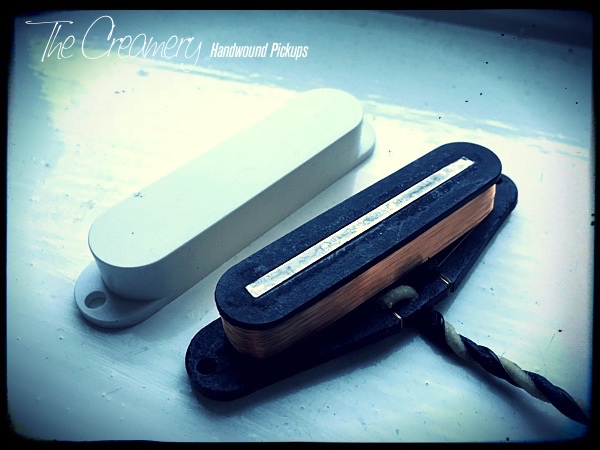
That said, the Bronco is an entry level instrument and, for a beginner with a small amp playing at bedroom level, the stock pickup will do its job.
So, that’s it. A very fun instrument overall, very cute and fun to play. I like those Bronco’s. Personnally I prefer the older neck, but the features are better on the new version overall.

